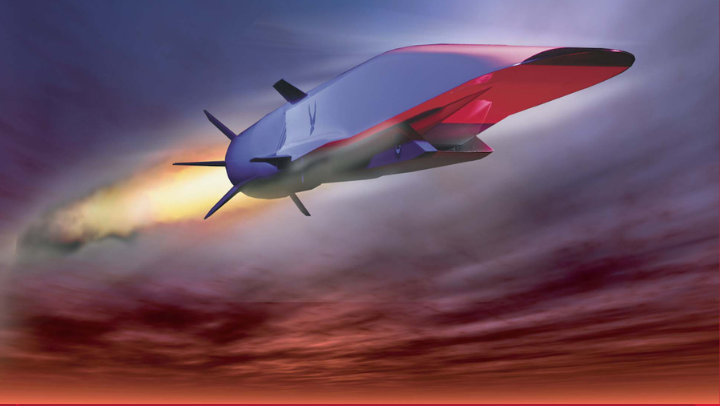Research looks at the math behind hypersonic flight
Two faculty members in the SDSU aerospace engineering department developed an improved model of predicting the interacting particle systems in detonation waves, an issue of interest to the U.S. Air Force.

Two San Diego State University aerospace engineering researchers are receiving international attention for their work on a new model in computational mathematics, flow physics and combustion science, research with implications for hypersonic military aircraft.
Professor Gustaaf Jacobs and Assistant Professor Qi Wang of SDSU College of Engineering, in collaboration with Stanford University’s Daniel Tartakovsky, have developed an improved mathematical model to predict how fuel droplets and gas particles behave within detonation waves. These high-energy waves occur in sonic booms, rocket engines and scramjets — systems capable of reaching hypersonic speeds.
Funded by grant from the U.S. Air Force Office of Scientific Research, the team’s work centers on interacting particle systems, a field of physics that emerged in the Manhattan Project at Los Alamos, New Mexico, where J. Robert Oppenheimer and Edward Teller led the development of the first atomic bomb.
“The driver of this is to understand how droplets of fuel that are injected into high-speed propulsion systems such as scramjets or rotating detonation engines — similar to rocket engines that are commonly used to achieve hypersonic flight — interact with shock waves,” Jacobs said. Hypersonic flight is Mach 4 and above, a speed achieved by the Boeing X-51 Waverider, an unmanned research experimental aircraft.
“It’s incredibly hard to fly at hypersonic speeds,” Jacobs said, and previously scientists had little information about the paths particles of liquid or gas take in these extreme environments.
Jacobs and Wang call their model the Liouville method, named after a 19th century French mathematician and engineer whose work included theorems in mathematical physics. Their model builds upon a cornerstone of statistical mechanics, the Fokker–Planck equation, and the Langevin model of predicting how particles move in a flow.
The SDSU College of Engineering researchers’ model uses a data-driven approach to infer forces from the scarce data that is available. They do so by iteratively using their framework to predict the locations of particles in a specific space with a specific speed changes over time to reach their measured data points.
Their findings were published as featured articles in the journal Physics of Fluid in April and June.
Under four-year AFOSR grants totalling $685,000 the work is largely oriented toward its implications for hypersonic aircraft, such as how the stability of gases and how they affect engine design, as well as the erosion of missile cones by condensed droplets.
“The thermal behavior — the stability behavior of gas very close to the flying object — is very finicky,” he said. “Once things go wrong at Mach 5 they go really wrong. That’s when the aircraft stops flying.”
Jacobs said however the model might also be applicable to medicine and environmental science. Breaking kidney stones involves a procedure that employs shock waves, he noted, and there are aspects of the physics of climate change and tracking of spills in the ocean that draw on particle dynamics.
The research team used high-performance computers at the U.S. Department of Defense to develop the model, along with a small cluster of processors at SDSU College of Engineering.
The SDSU researchers’ collaborators included Tartakovsky and a former SDSU Ph.D. student, Daniel Dominguez Vazquez, who graduated in 2024 and is now a staff scientist at the Spanish Research Council.


